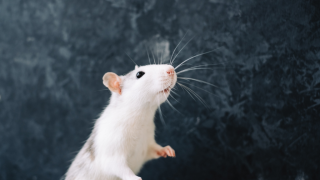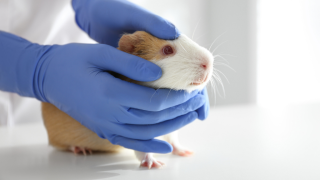World Mental Health Day
Tomorrow is World Mental Health Day, an annual global day of mental health education, awareness and advocacy. This year the theme is dignity in mental health. Yet countless animals continue to suffer and die in crude and bizarre testing designed to mimic complex human mental health conditions. Today, let’s work towards creating a world where animals are also treated with dignity and more humane and human relevant approaches are developed instead.
Despite decades of attempting to recreate human mental disorders in animals, such as depression, anxiety and schizophrenia, we are still a long way off from understanding the causes behind these diverse conditions or how to treat them. In fact, the search for new drugs has proven so unsuccessful that some drug companies have started to give up.1 Talking therapies and prevention strategies have proven much more beneficial at tackling mental illness than antipsychotic drugs, which often come with unwanted side effects.2,3 Yet, researchers continue to waste time and resources on fruitless animal experiments.
Much current research focuses on the use of crude ‘behaviour’ tests as part of research into mood disorders and their treatment. For example:
- The ‘forced swim test’ is often used to study depression in mice or rats. Animals are placed in cylinders of water and timed to see how long it takes for them to ‘give up’ swimming. It is thought that depressed animals will ‘give up’ sooner and those that have been given effective antidepressants will keep trying for longer. A similar test is called the ‘tail suspension test’, where mice are literally suspended by their tails and the time taken for them to give up struggling is measured.
- In patients with schizophrenia, the startle reflex is often exaggerated and they react very strongly to loud noises, even when they know they are coming. In the ‘startle test’, mice and rats, who have artificially been given the disease through genetic modification or brain damage, are trapped in cages and blasted with loud noises up to 120dB (which is equivalent to a sandblaster or thunderclap). They are then injected with drugs to see if the drugs have an effect on their reaction. The animals usually freeze, but may also run, jump, defecate in fear or even convulse in response to the noise.
- In an attempt to mimic human anxiety disorders, marmosets are used in cruel tests that exploit their fear of snakes. In these experiments, the animals are first conditioned to become anxious by being repeatedly forced into boxes and blasted with loud noise over a period of several weeks. Once they have become suitably nervous, plastic cobras are introduced into their cages and their reactions are observed. Anxious marmosets are seen to stay as far away as possible from the snake, freeze in fear or make frightened alarm calls.
All of these tests are extremely crude and it is impossible to determine if animals in these experiments actually experience anything similar to what a person with mental illness experiences. Even in patients with the same disorder, the underlying cause and clinical symptoms can be very different. The best way to learn more about human disorders is to study humans.












